Insights
Omnichannel e-commerce: Why it matters and how to shape your online approach
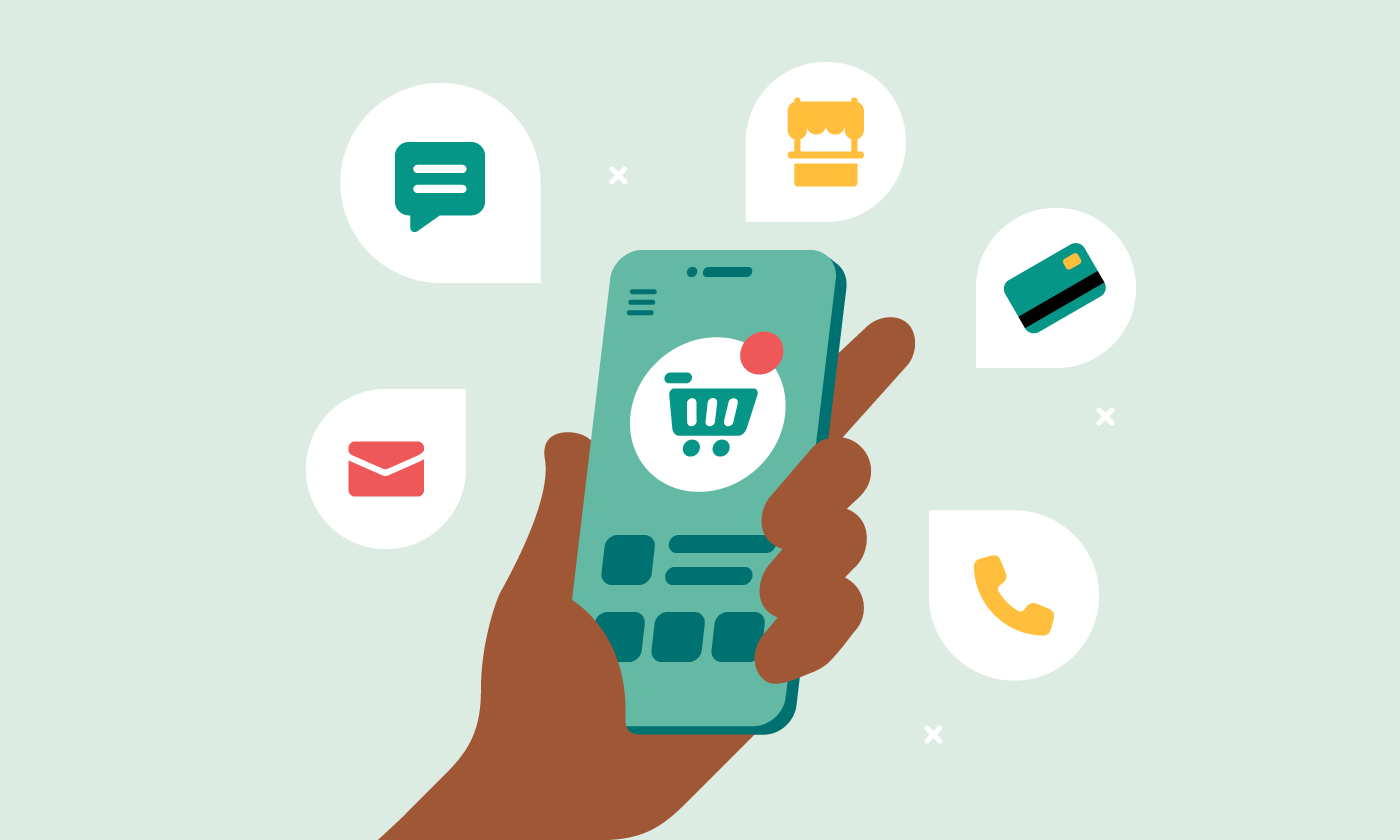
Insights

Customers interact with your brand across different e-commerce channels every single day. You’re probably used to engaging with them on social media, in apps, via email marketing, and in text campaigns, but these channels might not offer your customers a valuable experience unless they’re connected to each other. That’s where omnichannel e-commerce comes in!
Omnichannel e-commerce is about making online shopping seamless across channels, linking your company to its customers in convenient ways. This connectivity lets brands improve and personalize the customer experience, no matter where or how their customers choose to shop.
Customers want rich online retail experiences, so omnichannel e-commerce is a powerful strategy to boost businesses. Already, e-commerce makes up over 20% of retail spending and is set to grow to nearly 25% by 2027. Gear up and get ready to learn how to create an interconnected journey to better serve your customers!
Omnichannel e-commerce is a retail strategy that provides customers with seamless shopping experiences across multiple online channels. It combines all available channels, like online stores, marketplaces, websites, mobile apps, social media, and even phone and email to make shopping as easy as possible.
If it sounds familiar, it might be because it has the same foundations as omnichannel retail, but it sets its sights strictly on the growing e-commerce market. Instead of including brick-and-mortar stores, omnichannel e-commerce focuses only on online channels, though retailers with this strategy can also have a physical store or offline presence.
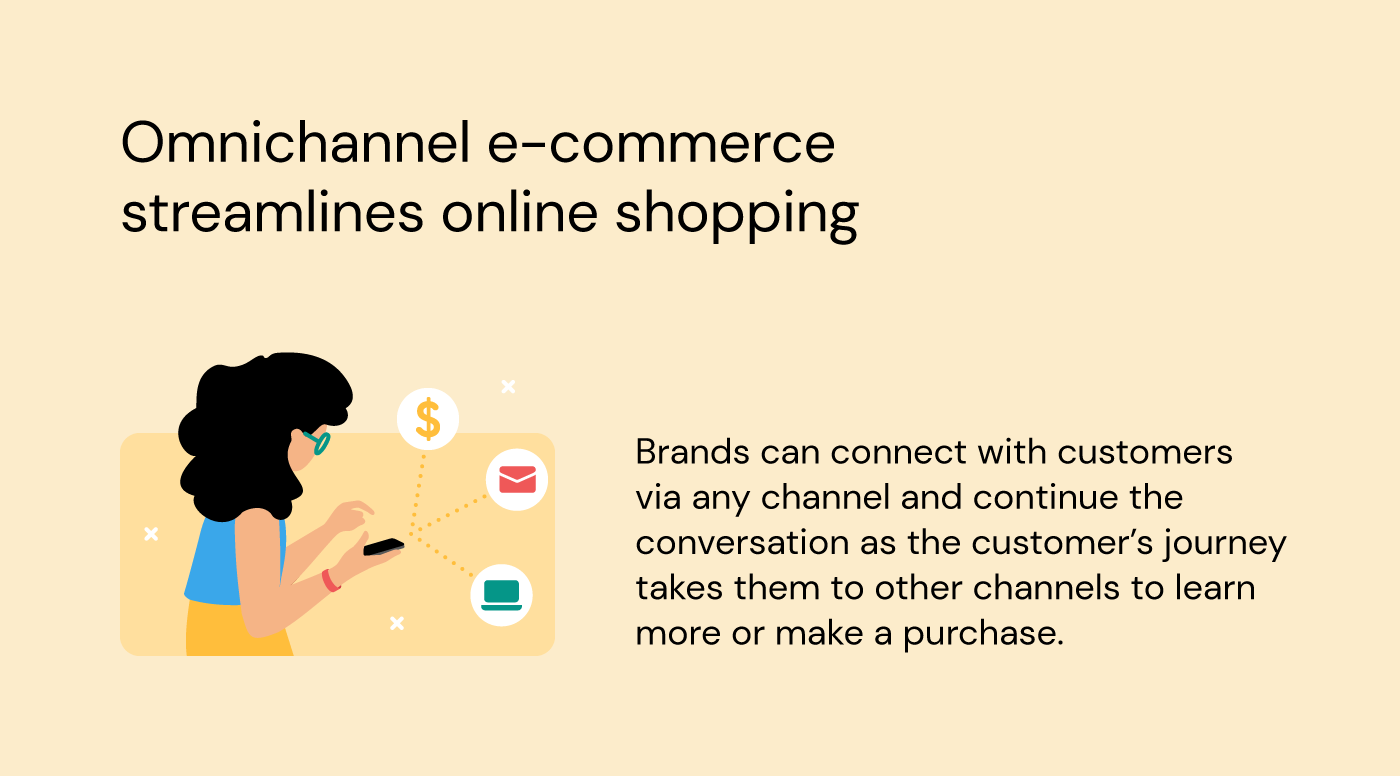
Omnichannel and multichannel e-commerce may sound similar, but they operate differently in providing customer experiences. In an omnichannel approach, the focus is on creating a seamless, interconnected journey for customers across all channels. This means maintaining consistency in messaging, branding, and pricing across various sales channels and e-commerce platforms. On the other hand, multichannel e-commerce offers various channels that may not necessarily be connected, resulting in potential discrepancies in the user experience.
Here’s a short chart comparing the differences between omnichannel vs multichannel e-commerce.
| Omnichannel e-commerce | Multichannel e-commerce | |
| Definition | Integrates all channels for a unified shopping experience | Uses multiple channels so customers can shop, but they may operate independently without much integration |
| Customer experience | Provides a unified, consistent experience across all channels | May differ across various channels |
| Goal | Enhance customer satisfaction and brand loyalty by providing a seamless customer experience | Expand reach and accessibility by offering products or services across multiple channels |
In essence, omnichannel e-commerce brings all channels together for a smooth, consistent shopping experience, while multichannel e-commerce uses separate channels to reach more customers
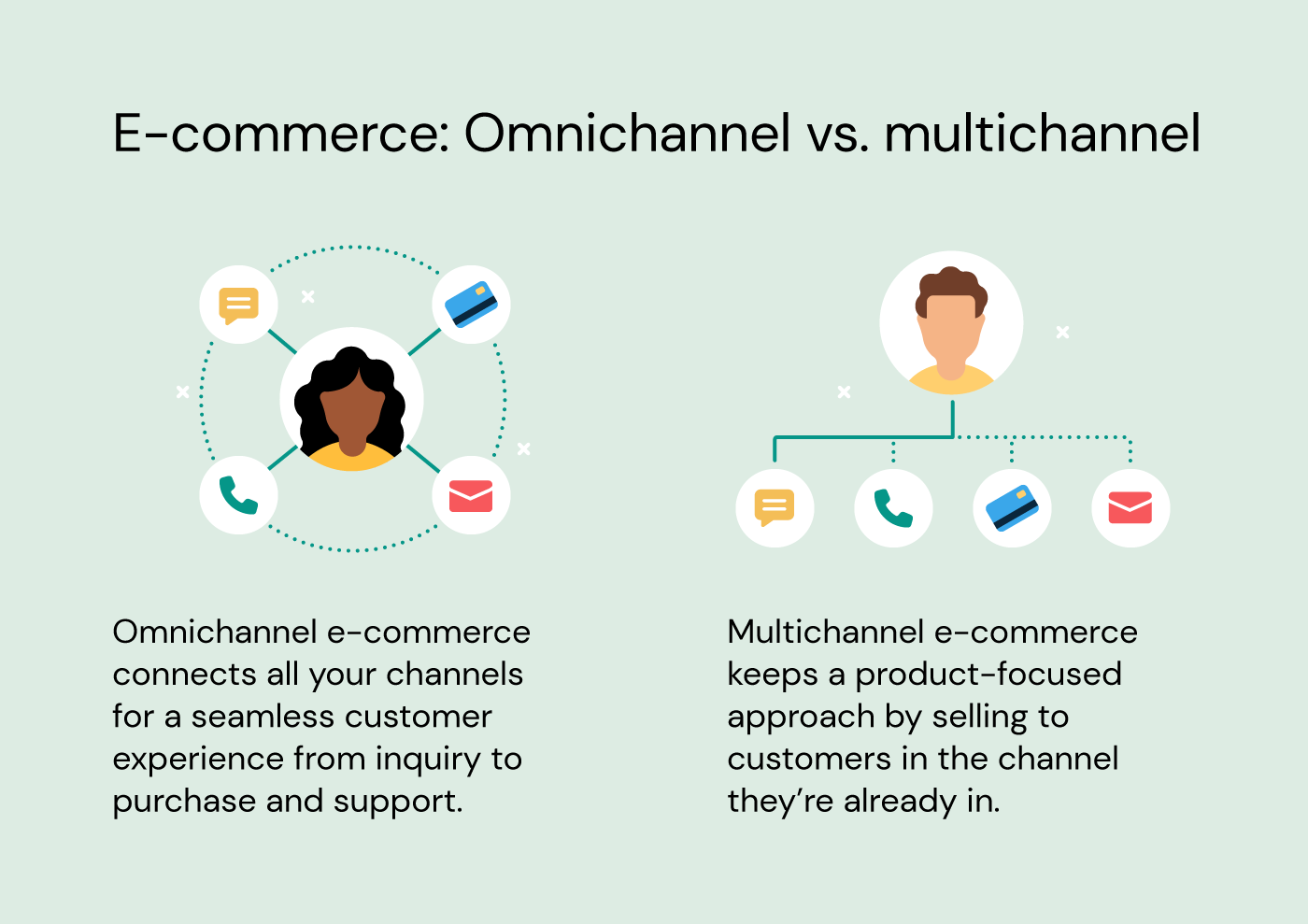
According to Statista, almost one in two e-commerce decision makers in Europe and North America believe omnichannel strategy to be very important. What’s more, shoppers expect a consistent and personalized experience across different channels. Here are a few benefits your business can expect when you give that to them.
According to Google, 53% of shoppers say they always do research before they buy to ensure they’re making the best possible choice. Why not meet them there? With an omnichannel approach, you can give them a seamless experience across all the channels they’re using, making it easier for them to find what they need.
This convenience and consistency can help them with their research, increasing their likelihood of making a purchase and boosting your sales. And by integrating your marketing campaigns across various channels, you can effectively capture and engage potential customers at different stages of their buying journey.
Almost nine in 10 customers say two-way conversations are important to them when interacting with a brand. An omnichannel approach can optimize your gathering of data from these conversations across all channels, providing invaluable insights into your customers’ behavior, tastes, and preferences, including their interactions with product information.
Omnichannel e-commerce keeps the conversation going – think of a customer reaching out on Instagram and ending up on your website browsing products. Then, they opt in for email marketing or text alerts. You can then send them an email with a discount code and a link to an item they viewed or added to their cart.
This way, you can reach customers on their preferred channels and keep things in sync when they hop over to another channel to continue their journey. Conversational messaging channels are a great way to create a unique customer experience for everyone who interacts with your brand on some level.
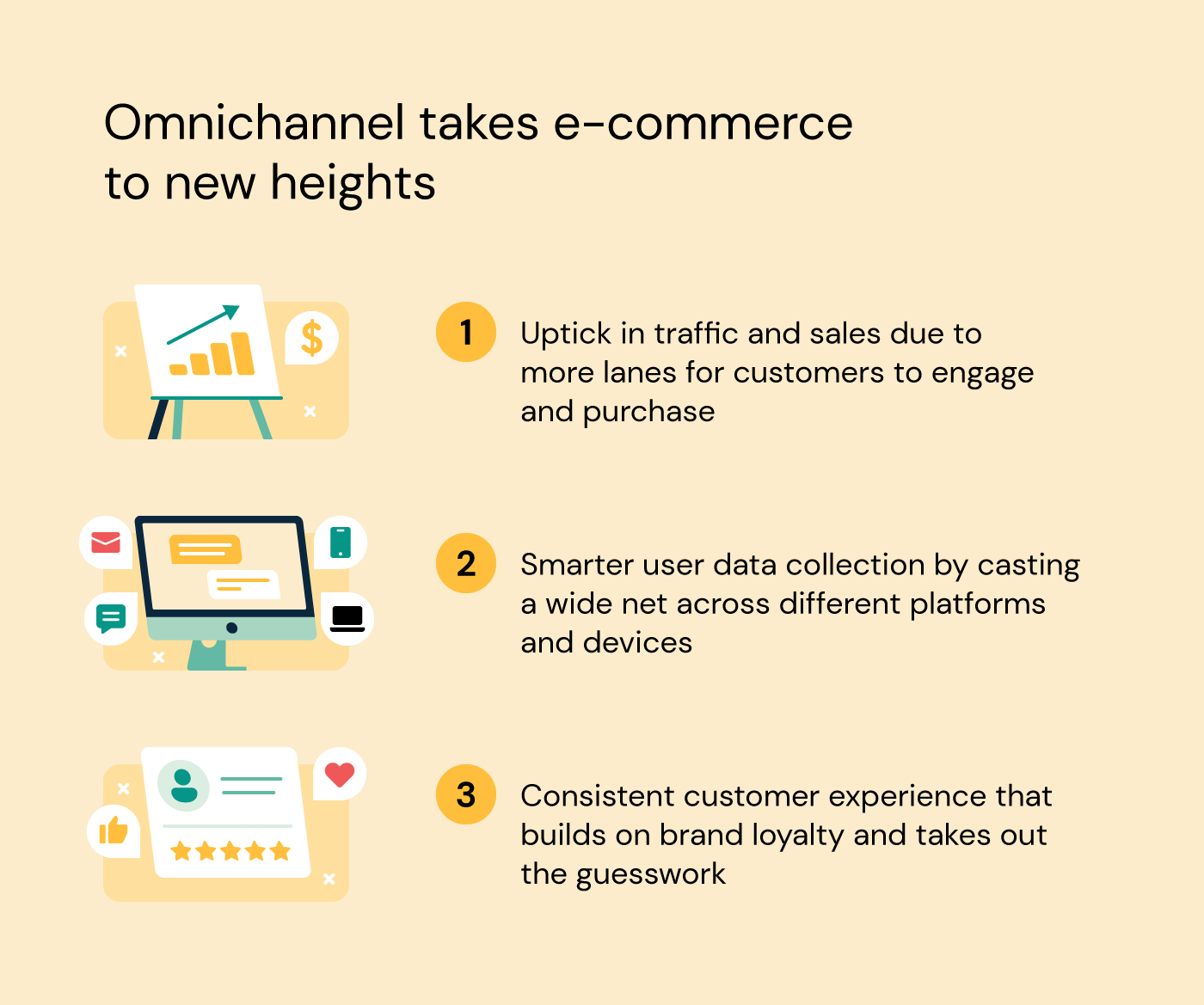
Sounds great, right? It is! But there are some common challenges that businesses face when implementing an omnichannel e-commerce strategy. Let’s explore these challenges in detail.
Whether a customer interacts with your brand in person, online, or through other channels, they expect a consistent brand experience. Failing to deliver consistency can lead to confusion and dissatisfaction.
A well-thought-out omnichannel strategy can help with this by optimizing processes and systems to help you ensure consistent branding and messaging across all touchpoints, including in-store experiences.
E-commerce businesses need to have an eye on their inventory in real-time to ensure accurate stock levels and prevent overselling. However, this can be challenging when inventory data is spread across multiple systems or channels.
In an omnichannel strategy, you’ll need to make sure your inventory data is centralized so you have real-time visibility into orders coming in from all sales channels.
Our research suggests that 43% of retail customers remember negative experiences for over one year. Customers expect seamless support across different channels, but disjointed systems and processes can result in fragmented customer experiences and delayed resolutions.
However, with an omnichannel strategy, you can implement automation tools that help you streamline workflows and improve efficiency in addressing customer inquiries across various channels and touchpoints.
Unsurprisingly, research suggests that omnichannel experiences are must-haves from consumers – but many e-commerce shops don’t actually provide omnichannel experiences in a meaningful way.
Here are a few ways to get started with an omnichannel e-commerce strategy.
Every customer’s buying journey is unique, so it’s up to you to meet their expectations on their channel of choice. To do this, it’s useful to start outlining the potential routes they might take. Identify key stages in the omnichannel customer journey like research, consideration, purchase, onboarding, product adoption, and loyalty.
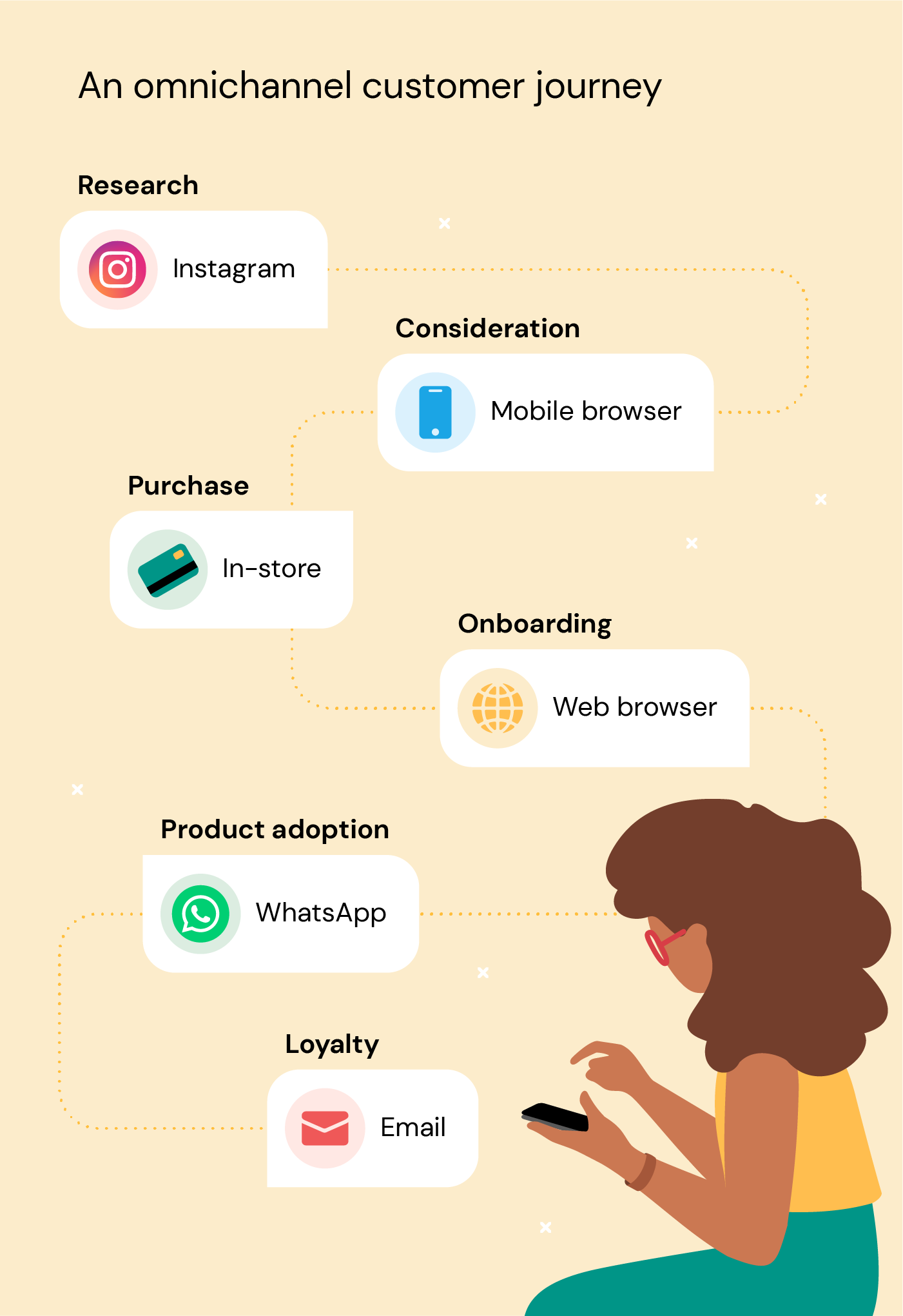
Once you do that, you can start thinking about where people are interacting with you at each stage. For instance, they might discover your products on social media, do research on your website, buy via your mobile app, and then get post-purchase help via email. Understanding these touchpoints helps tailor your omnichannel strategy to make their experience better and make them more likely to convert.
When choosing how to reach your customers, it might be tempting to stick with what you know. But the real trick is to choose the channels your customers love. Start by learning about your target audience and which channels they like. You can look at data like age, interests, and what they say in surveys to find out their favorite conversational messaging channels.
For example, if your customers are big on mobile messaging, think about using rich messaging channels like Rich Communication Services (RCS) and WhatsApp. These channels let you send interactive content like images, videos, or GIFs right to your customers’ phones. By picking channels your customers enjoy, you’ll grab their attention, and your messages will stand out!
If your customer can’t be sure that you’re the brand they mean to contact, then your brand won’t be successful in building the trust needed to carry that customer through and make a purchase.
You can incorporate omnichannel marketing in your e-commerce strategy to make sure that your brand’s presence on different platforms will be consistent and recognizable. This could look like personalized messages, discounts, or customer loyalty programs tailored to unique preferences and behavior.
But don’t stop there! Considering expanding your reach into marketplaces like Amazon, Facebook, or Etsy. Having your customers purchase via other online channels or social media platforms can help you add customer touchpoints that eventually bring them to your website.
We know by now that putting the customer at the center of the experience is the key to any successful omnichannel strategy. Each customer is unique, so you should aim to let them know that you understand their unique needs better than your competitors.
You can achieve this by personalizing your messaging through various channels. Use what you know about each customer to address their specific preferences and requirements. This will not only enhance the customer experience but set you apart from the competition.
Here’s a real-life example: Nissan Europe used a personalized SMS solution that could harness its CRM data to personalize its mobile messaging and target its customers wherever they were. As a result, they drove 4.7x higher engagement and an 80% conversion rate. That’s what can happen when you prioritize personalization in your omnichannel strategy!
An omnichannel strategy revolves around putting the customer first, allowing you to understand their journey and needs while aligning your sales goals to them.
Focus on building trust and meeting the specific needs of each customer. Ensure you address the reasons why your customers choose your product, and leverage tools like conversational AI or live chat tools to boost customer satisfaction.
Want to see this in action? Luxury fashion house Zadig & Voltaire wanted to create a great customer care experience, so they implemented a solution to make its customers feel heard across channels, starting first the one million plus people following their Instagram channel.
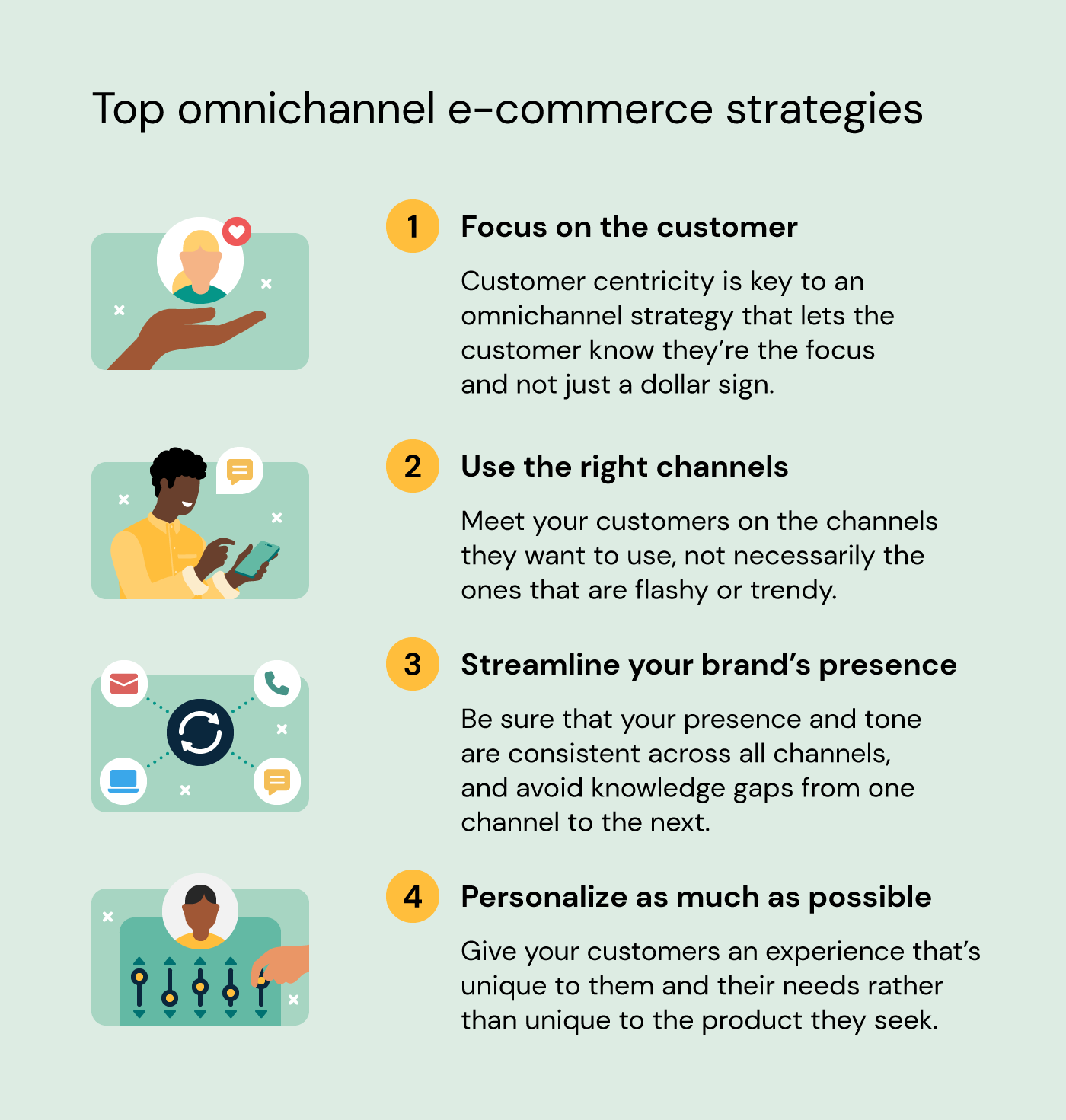
Creating an omnichannel e-commerce strategy isn’t just about keeping up with the trends – it’s about meeting and exceeding customer expectations in an increasingly interconnected world. But by prioritizing personalization and consistent messaging across all channels, businesses can create stronger connections with their customers, drive sales, and stay ahead of the competition.
Ready to take your omnichannel strategy to the next level? Download our conversational messaging guide to unlock the power of seamless customer engagement across all channels.
Or, if you’re ready to diversify your online presence, we can help! Let’s chat about the best ways to have meaningful conversations across the channels that your customers love.